Simply incredible! I acquired a vast amount of content that will provide me with great knowledge both professionally and personally. It is an enormous pleasure to share these moments and learn from professionals of excellence. Thank you very much, and I will be there in 2024 for another fantastic weekend.
Limited capacity!
95%
The Convention
Mark your calendar now for the upcoming days October 25th, 26th, and 27th to meet again for 3 unforgettable days filled with sharing, interaction, and knowledge about the aquatic world!
Once again, the event is full of innovations and will be held in person.
The Team Aqua Academy by Mundo Hidro and our national and international guests look forward to seeing you at the Salesianos de Manique pool.
Last year’s edition was memorable… click on the video.
International Certifications
0
Masterclasses
0
Workshops
0
Practical pool
laboratories
laboratories
0
Aquatic Fitness
Swimming
Aquatic Therapeutic Exercise
The Speakers
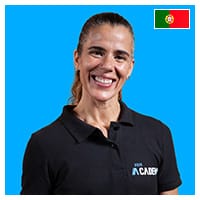
Tinoca
Pedagogical Director Aqua Academy by Mundo Hidro
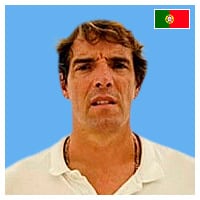
Ricardo Pedroso
Former Olympic swimming athlete

Andrea Gilardoni
Master-Trainer SAF AQUA Drums Vibes

Silvia Senati
International Specialist Master Trainer AEA

Kristof Van Uffelen
Aquatic fitness instructor for over 10 years
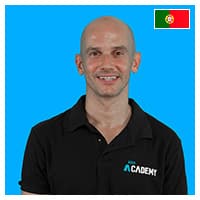
João Santos
AEA (Aquatic Exercise Association) Instructor of the Year

Rita Carvalho
Responsible for the AquaPilates program at Mundo Hidro

Marta Mergulhão
Aquatic Activities Teacher at Health Club Visconde

Nuno Santos
Technical Coordinator and Swimming and Aquatic Activities Teacher
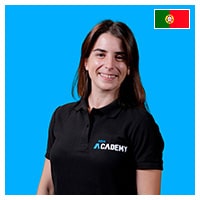
Joana Freitas
Master's degree in Exercise and Health

Pedro Santos
AEA (Aquatic Exercise Association) Instructor of the Year

Renata Tarevnic
Master's in Biodynamics of Movement

Rui Santos
Technical Director and Manager of the Municipal Pools of Odivelas

Bruno Moura
Trainer Internacional AEA
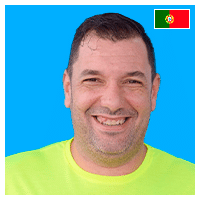
Vítor Santos
Sports Activities Technician at Sintra City Council

Arlette Ramos
Aquatic Fitness Specialist

Luís Brandão
Master's in Teaching Physical Education in Basic and Secondary Education

Soraia Cardia
Group & Personal Trainer

Sonia Lima
Supervisor and consultant in the fields of speech therapy and professional communication.
More speakers to be announced soon...
Schedule
Legenda:
- Masterclass
- Theoretical-Practical Workshop
- Theoretical Swimming Workshop
- Practical Pool Laboratory
- Theoretical Workshop
Choose one of the days below to see the schedule
Schedule
25th oct.
25th oct.
Schedule
26th oct.
26th oct.
Schedule
27th oct.
27th oct.
Schedule
25th oct.
25th oct.
Checkin starts at 9h
Auditorium 1 & Swimming Pool
International Certification
Special Populations
- 10h – 17h30
- Renata Tarevnic & Tinoca
Scientific evidence points to Aquatic Exercise as one of the main remedies for metabolic, muscular, and even cognitive diseases. However, are the effects of immersion, temperature, and depth conditioning or facilitating factors for these populations?
What adaptations, contraindications, or prescriptions should be made for people with these pathologies?
Many clients have one or more pathologies and attend Aquafit classes, making the group heterogeneous and class management complex.
To ensure an efficient and safe prescription, in this International Certification, we will focus on the following topics:
- What precautions to take and the most current evidence from the literature
- Which training is most efficient: continuous, interval, or concurrent?
- How to elaborate the anamnesis and assessment
- Strategies and most efficient exercises
- How to conduct a safe and efficient class for everyone
Training Room & Swimming Pool
International Certification
Swimming Techniques: From Learning to Competition
- 10h – 17h30
- Ricardo Pedrosa
Whether you are 5 or 100 years old, knowing how to swim efficiently can be vital for safety and even for our survival!
When swimming in a pool, river, lake, ocean, or any other body of water in a competitive (or recreational) process, it is essential that the swimming technique model is automated and optimized.
The technical model must be as efficient, stable, economical, and adaptable as possible.
The differentiating process of transitioning from a swimming school to pre-competition should occur after a good development of motor skills, mastery of the technical teaching model (4 swimming strokes, starts, turns, and finishes), and knowledge of their regulations.
It is also essential to create training habits: attendance, punctuality, discipline, organization, and independence.
Subsequently, it is important to develop a passion for participation and competition, as well as to stimulate personal improvement, knowing how to behave, act, and interact in a group.
Finally, it is crucial to develop the ability to set goals and respect opponents, referees, components of the sport, and its rules so that, at the end of the process, we have the fundamental and relevant characteristics of a swimmer.
Schedule
26th oct.
26th oct.
Checkin starts at 9h
Auditorium 1
Theoretical Workshop
Senior Combo
- 10h – 12h30m
- Tinoca, Nuno Santos & Renata Tarevnic
Longevity has increased, and it is estimated that the number of elderly will reach 21% of the world’s population, surpassing the number of young people, making it increasingly important to identify and create interventions that enable the prevention of disability and the optimization of independence for this population.
Physical exercise is an important non-pharmacological resource for adding quality of life to the years gained, but the diversity of aging and the resulting needs are a challenge for all professionals involved.
For 2 hours and 30 minutes, Tinoca, Nuno, and Renata will address three different topics related to the senior population, and you will be able to clarify all your doubts and questions.
Topics and Professors:
The importance of affection – Tinoca
Neuromotor and multicomponent training – Nuno Santos
Scientific evidence – Renata Tarevnic
Theoretical Swimming Workshop
Pedagogical Aspects of Teaching Baby Swimming
- 14h – 15h30
- Renata Tarevnic
Develop brilliant classes for babies!
By establishing pedagogical aspects (methods, objectives, and content), the teacher becomes capable of developing motor, cognitive, and emotional skills through playful and creative lessons.
Theoretical Swimming Workshop
Adapted Swimming
- 15h45 – 17h15
- Marta Mergulhão
It will be a Workshop filled with sharing and practical cases presented in the context of classes and personalized training sessions.
This is the recipe beyond the recipe—how to use knowledge of techniques, prescriptions, methodologies, and intuition, and adapt them to the essence of each case and need, using Swimming as a base, but exploring what the water has to offer.
Theoretical Swimming Workshop
Assertive Recruitment and Continuous Training
- 17h30 – 19h
- Rui Santos
The right people in the right positions make all the difference.
The management of a swimming pool is based on valuing its technicians as the most valuable asset of the organization.
The economic sustainability and profitability of a pool’s water plans are directly related to the reciprocity between the technician and the manager, between adding value to the organization and returning that value to the technician.
Assertive recruitment and continuous training are the foundation for the happiness of technicians and the path to the organization’s success.
Training Room
Theoretical-Practical Workshop
All about ABS
- 14h – 14h45
- Silvia Senati
In this Workshop, we will analyze the anatomy and functions of the abdominals to create training exercises—both stabilizers and mobilizers of the pelvis and spine—as well as the management of correct posture and the application of the Canali method principles.
Come discover how to work the abdominals in an aquatic environment using floating equipment or without any equipment at all.
Theoretical Workshop
Spinal Dysfunctions: Aquatic Work Proposals
- 15h45 – 17h15
- Joana Freitas
In this Workshop, we will cover content related to the main functions of the spine and the optimization of key movements applied to the general population.
We will also present practical intervention strategies, considering the healthy population and some practical cases of spinal pathologies.
Swimming Pool
Masterclasses
Power Noodles | AquaFunctional Seniors | Level Up Interval Challenge
- 13h30 – 15h
- Pedro Santos, Arlette Ramos & Andrea Gilardoni
Power Noodles – Pedro Santos
AquaFuncional Seniores – Arlette Ramos
Level Up Interval Challenge – Andrea Gilardoni
Theoretical-Practical Workshop
All about ABS
- 15h – 15h45
- Silvia Senati
In this Workshop, we will analyze the anatomy and functions of the abdominals to create training exercises—both stabilizers and mobilizers of the pelvis and spine—as well as the management of correct posture and the application of the Canali method principles.
Come discover how to work the abdominals in an aquatic environment using floating equipment or without any equipment at all.
Practical Pool Laboratory
Playing, Singing, and Feeling
- 16h – 17h
- Renata Tarevnic
In this practical laboratory, we will experience and understand water as the GREATEST playful tool for learning swimming. With many ideas, suggestions, creativity, and various possibilities of body elements for you to develop in your classes.
Practical Pool Laboratory
Bikes and Trampolines
- 17h – 18h
- João Santos & Tinoca
This laboratory presents a way for you to maximize the profitability and differentiation of your pool and classes while continuing to innovate.
You will have the opportunity to receive information about the main characteristics of each piece of equipment, usage rules, and many practical suggestions.
Masterclasses
TOPCoreo | Working of Block | Old School
- 18h – 19h30
- Rita Carvalho, Soraia Cardia, Kristof Van Uffelen, Silvia Senati & Tinoca
TOPCoreo – Rita Carvalho & Soraia Cardia
Working of Block – Kristof Van Uffelen
Old School – Silvia Senati & Tinoca
Schedule
27th oct.
27th oct.
Checkin starts at 8h
Auditorium 1
Theoretical Workshop
High Intensity: From EMOMs to AMRAPs through Tabatas
- 9h30 – 11h
- João Santos
In this workshop, you will examine and understand the differences between AMRAP, EMOM, and RFT training styles, which are commonly used in gyms and Cross Training classes.
You will get to know the studies that have been conducted with these types of training and, in addition, learn how to adapt and use these techniques in your Aqua Gym classes.
Theoretical Swimming Workshop
Evaluation and Inclusion in AMAs
- 11h15 – 12h45
- Renata Tarevnic
At the end of this Workshop, teachers will be able to develop numerous strategies to assess and include students in Swimming classes.
We will work together on this theoretical proposal. However, you will be the “key” to this process.
Theoretical Workshop
Taking Care of Your Voice
- 14h – 15h30
- Catarina Olim & Sónia Lima
If you don’t take care of your voice, you may one day become hoarse, develop vocal nodules, or lose your voice.
That’s why we’re going to teach you techniques to value and care for this essential tool for your professional activity!
Theoretical Swimming Workshop
Swimming: Triathlon and Open Water
- 15h30 – 17h
- Ricardo Pedroso
Both Triathlon and Open Water Swimming are branches of Swimming that are experiencing significant growth and visibility, not only nationally but also internationally. These activities allow us to enjoy the idyllic water bodies found in Portugal and other countries.
We will address their specific technical aspects as well as the organizational characteristics of these aquatic events.
After attending this Workshop, who knows—you might become a Swimmer, Triathlon Coach, or even an organizer of these events.
Training Room
Theoretical-Practical Workshop
Coreo Training
- 9h30 – 10h15
- Silvia Senati
Epic movements and playlists leave your participants eager for the next class!
Using choreography is an effective way to train the cardiorespiratory system, the core, and coordination.
Expand your toolkit as an Instructor with this spectacular Workshop, where you will explore different styles of choreography to provide effective workouts, maximizing the properties of water, music, and movement.
Theoretical-Practical Workshop
Reflexology and Myofascial Release in Aqua
- 10h30 – 11h15
- Arlette Ramos
In this Workshop, you will have the opportunity to understand the history of Reflexology and Myofascial Release, the differences between conventional approaches, and their adaptation to the aquatic environment.
You will also learn how to design a session, the benefits, contraindications, and methodologies that will certainly enrich your classes and/or personal training sessions.
Theoretical-Practical Workshop
Aqua Bootcamp
- 11h30 – 12h15
- Pedro Santos
We know how beneficial and intense aquatic workouts can be, and that’s why we want to bring more students to our classes, not only with health goals but also with a focus on improving physical fitness.
We want to bring a new training perspective to our classes!
In this Workshop, we aim to provide you with tools to transform your classes and help your students/athletes face their biggest challenges and strive to reach their true potential.
Theoretical-Practical Workshop
AquaPilates
- 14h – 14h45
- Rita Carvalho
The benefits of aquatic activities and Pilates are undeniable!
Being able to combine, reconcile, and adapt the best aspects of these two modalities is certainly an added value for our students and our pools, both in the context of personal training and group sessions.
Stretch, control, strengthen!
Swimming Pool
Masterclasses
Aquatic Total Tone System | Fit & Fun | Get HIGH
- 9h – 10h30
- Andrea Gilardoni, Nuno Santos, Joana Freitas, Rita Carvalho & Vítor Santos
Aquatic Total Tone System – Andrea Gilardoni
Fit & Fun – Nuno Santos & Joana Freitas
Get HIGH – Rita Carvalho & Vítor Santos
Theoretical-Practical Workshop
Coreo Training
- 10h30 – 11h15
- Silvia Senati
Epic movements and playlists leave your participants eager for the next class!
Using choreography is an effective way to train the cardiorespiratory system, the core, and coordination.
Expand your toolkit as an Instructor with this spectacular Workshop, where you will explore different styles of choreography to provide effective workouts, maximizing the properties of water, music, and movement.
Theoretical-Practical Workshop
Reflexology and Myofascial Release in Water
- 11h30 – 12h15
- Arlette Ramos
In this Workshop, you will have the opportunity to understand the history of Reflexology and Myofascial Release, the differences between conventional approaches, and their adaptation to the aquatic environment.
You will also learn how to design a session, the benefits, contraindications, and methodologies that will certainly enrich your classes and/or personal training sessions.
Theoretical-Practical Workshop
Aqua Bootcamp
- 12h30 – 13h15
- Pedro Santos
We know how beneficial and intense aquatic workouts can be, and that’s why we want to bring more students to our classes, not only with health goals but also with a focus on improving physical fitness.
We want to bring a new training perspective to our classes!
In this Workshop, we aim to provide you with tools to transform your classes and help your students/athletes face their biggest challenges and strive to reach their true potential.
Masterclasses
Aqua Latina | The Grand Ball | Combat
- 13h30 – 14h30
- Luís Brandão, CM Silves & Silvia Senati
Aqua Latina – Luís Brandão
O grande baile – CMSilves
Combat – Silvia Senati
Theoretical-Practical Workshop
AquaPilates
- 15h – 15h45
- Rita Carvalho
The benefits of aquatic activities and Pilates are undeniable!
Being able to combine, reconcile, and adapt the best aspects of these two modalities is certainly an added value for our students and our pools, both in the context of personal training and group sessions.
Stretch, control, strengthen!
Practical Pool Laboratory
NeuroPLAY – AquaVital
- 16h – 17h
- Nuno Santos & Tinoca
The objectives of this 100% practical workshop are to maintain and develop the physical and cognitive qualities essential for the daily life tasks of our seniors.
To achieve these goals, we will use motivational strategies where fun and socialization are key factors for greater adherence, retention, and effectiveness of the program.
Masterclasses
Squadra Italiana | Lets Coreo | All aboard
- 17h – 18h30
- João Santos, Bruno Moura & Team Aqua Academy by Mundo Hidro
Squadra Latina
Let’s Choreo – João Santos & Bruno Moura
ALL TOGETHER
Friday
October 25th
- International Certification
Special Populations
- 10h - 17h30
- Renata Tarevnic & Tinoca
- Auditorium 1 & Swimming Pool
Scientific evidence points to Aquatic Exercise as one of the main remedies for metabolic, muscular, and even cognitive diseases. However, are the effects of immersion, temperature, and depth conditioning or facilitating factors for these populations?
What adaptations, contraindications, or prescriptions should be made for people with these pathologies?
Many clients have one or more pathologies and attend Aquafit classes, making the group heterogeneous and class management complex.
To ensure an efficient and safe prescription, in this International Certification, we will focus on the following topics:
- What precautions to take and the most current evidence from the literature
- Which training is most efficient: continuous, interval, or concurrent?
- How to elaborate the anamnesis and assessment
- Strategies and most efficient exercises
- How to conduct a safe and efficient class for everyone
- International Certification
Swimming Techniques: From Learning to Competition
- 10h - 17h30
- Ricardo Pedrosa
- Training Room & Swimming Pool
Whether you are 5 or 100 years old, knowing how to swim efficiently can be vital for safety and even for our survival!
When swimming in a pool, river, lake, ocean, or any other body of water in a competitive (or recreational) process, it is essential that the swimming technique model is automated and optimized.
The technical model must be as efficient, stable, economical, and adaptable as possible.
The differentiating process of transitioning from a swimming school to pre-competition should occur after a good development of motor skills, mastery of the technical teaching model (4 swimming strokes, starts, turns, and finishes), and knowledge of their regulations.
It is also essential to create training habits: attendance, punctuality, discipline, organization, and independence.
Subsequently, it is important to develop a passion for participation and competition, as well as to stimulate personal improvement, knowing how to behave, act, and interact in a group.
Finally, it is crucial to develop the ability to set goals and respect opponents, referees, components of the sport, and its rules so that, at the end of the process, we have the fundamental and relevant characteristics of a swimmer.
Saturday
October 26th
- Theoretical Workshop
Senior Combo
- 10h - 12h30m
- Tinoca, Nuno Santos & Renata Tarevnic
- Auditorium 1
Longevity has increased, and it is estimated that the number of elderly will reach 21% of the world’s population, surpassing the number of young people, making it increasingly important to identify and create interventions that enable the prevention of disability and the optimization of independence for this population.
Physical exercise is an important non-pharmacological resource for adding quality of life to the years gained, but the diversity of aging and the resulting needs are a challenge for all professionals involved.
For 2 hours and 30 minutes, Tinoca, Nuno, and Renata will address three different topics related to the senior population, and you will be able to clarify all your doubts and questions.
Topics and Professors:
The importance of affection – Tinoca
Neuromotor and multicomponent training – Nuno Santos
Scientific evidence – Renata Tarevnic
- Masterclasses
Power Noodles | AquaFunctional Seniors | Level Up Interval Challenge
- 13h30 - 15h
- Pedro Santos, Arlette Ramos & Andrea Gilardoni
- Swimming Pool
Power Noodles – Pedro Santos
AquaFuncional Seniores – Arlette Ramos
Level Up Interval Challenge – Andrea Gilardoni
- Theoretical Swimming Workshop
Pedagogical Aspects of Teaching Baby Swimming
- 14h - 15h30
- Renata Tarevnic
- Auditorium 1
Develop brilliant classes for babies!
By establishing pedagogical aspects (methods, objectives, and content), the teacher becomes capable of developing motor, cognitive, and emotional skills through playful and creative lessons.
- Theoretical-Practical Workshop
All about ABS
- 14h - 15h45
- Silvia Senati
- Training Room & Swimming Pool
In this Workshop, we will analyze the anatomy and functions of the abdominals to create training exercises—both stabilizers and mobilizers of the pelvis and spine—as well as the management of correct posture and the application of the Canali method principles.
Come discover how to work the abdominals in an aquatic environment using floating equipment or without any equipment at all.
- Theoretical Swimming Workshop
Adapted Swimming
- 15h45 - 17h15
- Marta Mergulhão
- Auditorium 1
It will be a Workshop filled with sharing and practical cases presented in the context of classes and personalized training sessions.
This is the recipe beyond the recipe—how to use knowledge of techniques, prescriptions, methodologies, and intuition, and adapt them to the essence of each case and need, using Swimming as a base, but exploring what the water has to offer.
- Theoretical Workshop
Spinal Dysfunctions: Aquatic Work Proposals
- 15h45 - 17h15
- Joana Freitas
- Training Room
In this Workshop, we will cover content related to the main functions of the spine and the optimization of key movements applied to the general population.
We will also present practical intervention strategies, considering the healthy population and some practical cases of spinal pathologies.
- Practical Pool Laboratory
Playing, Singing, and Feeling
- 16h - 17h
- Renata Tarevnic
- Swimming Pool
In this practical laboratory, we will experience and understand water as the GREATEST playful tool for learning swimming. With many ideas, suggestions, creativity, and various possibilities of body elements for you to develop in your classes.
- Practical Pool Laboratory
Bikes and Trampolines
- 17h - 18h
- João Santos & Tinoca
- Swimming Pool
This laboratory presents a way for you to maximize the profitability and differentiation of your pool and classes while continuing to innovate.
You will have the opportunity to receive information about the main characteristics of each piece of equipment, usage rules, and many practical suggestions.
- Theoretical Swimming Workshop
Assertive Recruitment and Continuous Training
- 17h30 - 19h
- Rui Santos
- Auditorium 1
The right people in the right positions make all the difference.
The management of a swimming pool is based on valuing its technicians as the most valuable asset of the organization.
The economic sustainability and profitability of a pool’s water plans are directly related to the reciprocity between the technician and the manager, between adding value to the organization and returning that value to the technician.
Assertive recruitment and continuous training are the foundation for the happiness of technicians and the path to the organization’s success.
- Masterclasses
TOPCoreo | Working of Block | Old School
- 18h - 19h30
- Rita Carvalho, Soraia Cardia, Kristof Van Uffelen, Silvia Senati & Tinoca
- Swimming Pool
TOPCoreo – Rita Carvalho & Soraia Cardia
Working of Block – Kristof Van Uffelen
Old School – Silvia Senati & Tinoca
Sunday
October 27th
- Masterclasses
Aquatic Total Tone System | Fit & Fun | Get HIGH
- 9h - 10h30
- Andrea Gilardoni, Nuno Santos, Joana Freitas, Rita Carvalho & Vítor Santos
- Swimming Pool
Aquatic Total Tone System – Andrea Gilardoni
Fit & Fun – Nuno Santos & Joana Freitas
Get HIGH – Rita Carvalho & Vítor Santos
- Theoretical-Practical Workshop
Coreo Training
- 9h30 - 11h15
- Silvia Senati
- Training Room & Swimming Pool
Epic movements and playlists leave your participants eager for the next class!
Using choreography is an effective way to train the cardiorespiratory system, the core, and coordination.
Expand your toolkit as an Instructor with this spectacular Workshop, where you will explore different styles of choreography to provide effective workouts, maximizing the properties of water, music, and movement.
- Theoretical Workshop
High Intensity: From EMOMs to AMRAPs through Tabatas
- 9h30 - 11h
- João Santos
- Auditorium 1
In this workshop, you will examine and understand the differences between AMRAP, EMOM, and RFT training styles, which are commonly used in gyms and Cross Training classes.
You will get to know the studies that have been conducted with these types of training and, in addition, learn how to adapt and use these techniques in your Aqua Gym classes.
- Theoretical-Practical Workshop
Reflexology and Myofascial Release in Aqua
- 10h30 - 12h15
- Arlette Ramos
- Training Room & Swimming Pool
In this Workshop, you will have the opportunity to understand the history of Reflexology and Myofascial Release, the differences between conventional approaches, and their adaptation to the aquatic environment.
You will also learn how to design a session, the benefits, contraindications, and methodologies that will certainly enrich your classes and/or personal training sessions.
- Theoretical Swimming Workshop
Evaluation and Inclusion in AMAs
- 11h15 - 12h45
- Renata Tarevnic
- Auditorium 1
At the end of this Workshop, teachers will be able to develop numerous strategies to assess and include students in Swimming classes.
We will work together on this theoretical proposal. However, you will be the “key” to this process.
- Theoretical-Practical Workshop
Aqua Bootcamp
- 11h30 - 13h15
- Pedro Santos
- Training Room & Swimming Pool
We know how beneficial and intense aquatic workouts can be, and that’s why we want to bring more students to our classes, not only with health goals but also with a focus on improving physical fitness.
We want to bring a new training perspective to our classes!
In this Workshop, we aim to provide you with tools to transform your classes and help your students/athletes face their biggest challenges and strive to reach their true potential.
- Masterclasses
Aqua Latina | The Grand Ball | Combat
- 13h30 - 14h30
- Luís Brandão, CM Silves & Silvia Senati
- Swimming Pool
Aqua Latina – Luís Brandão
O grande baile – CMSilves
Combat – Silvia Senati
- Theoretical-Practical Workshop
AquaPilates
- 14h - 15h45
- Rita Carvalho
- Training Room & Swimming Pool
The benefits of aquatic activities and Pilates are undeniable!
Being able to combine, reconcile, and adapt the best aspects of these two modalities is certainly an added value for our students and our pools, both in the context of personal training and group sessions.
Stretch, control, strengthen!
- Theoretical Workshop
Taking Care of Your Voice
- 14h - 15h30
- Catarina Olim & Sónia Lima
- Auditorium 1
If you don’t take care of your voice, you may one day become hoarse, develop vocal nodules, or lose your voice.
That’s why we’re going to teach you techniques to value and care for this essential tool for your professional activity!
- Theoretical Swimming Workshop
Swimming: Triathlon and Open Water
- 15h30 - 17h
- Ricardo Pedroso
- Auditorium 1
Both Triathlon and Open Water Swimming are branches of Swimming that are experiencing significant growth and visibility, not only nationally but also internationally. These activities allow us to enjoy the idyllic water bodies found in Portugal and other countries.
We will address their specific technical aspects as well as the organizational characteristics of these aquatic events.
After attending this Workshop, who knows—you might become a Swimmer, Triathlon Coach, or even an organizer of these events.
- Practical Pool Laboratory
NeuroPLAY - AquaVital
- 16h - 17h
- Nuno Santos & Tinoca
- Swimming Pool
The objectives of this 100% practical workshop are to maintain and develop the physical and cognitive qualities essential for the daily life tasks of our seniors.
To achieve these goals, we will use motivational strategies where fun and socialization are key factors for greater adherence, retention, and effectiveness of the program.
- Masterclasses
Squadra Italiana | Lets Coreo | All aboard
- 17h - 18h30
- João Santos, Bruno Moura & Team Aqua Academy by Mundo Hidro
- Swimming Pool
Squadra Latina
Let’s Choreo – João Santos & Bruno Moura
ALL TOGETHER
The Location
The chosen venue for the 23rd Edition of the International Convention Aqua Academy by Mundo Hidro is once again the Salesianos de Manique pool in Cascais.
Address: Rua dos Salesianos, No. 1, Manique de Baixo, 2645-438 Alcabideche
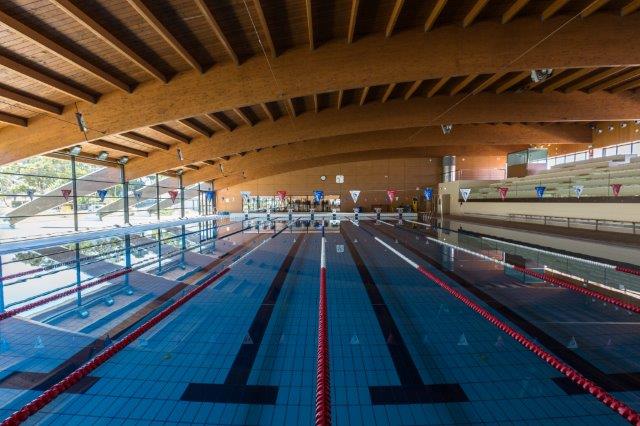
Last Edition in Numbers:
International Certifications
0
Hands-On Labs
0
Workshops
0
Masterclasses
0
National and International Presenters
+
0
Participants
+
0
Testemonials
Nádia Braz
Swimming Coach
- XXII International Convention Aqua Academy by Mundo Hidro
Congratulations to the entire Aqua Academy team! The entire convention was meticulously organized – from the moment of registration, accreditation, and signage at the venue to adhering to the scheduled timetable and offering a wide range of options. It was possible to choose the topics that best suited our needs. The entire team demonstrated great professionalism in imparting knowledge, always with passion and energy. Without a doubt, a great asset.
Daniela Nobre
Swimming Coach
- XXII International Convention Aqua Academy by Mundo Hidro
This was my first participation in this convention. Overall, I really liked the atmosphere, the venue, and the instructors. Most importantly, it brought a breath of fresh air to continue teaching water aerobics classes with motivation.
Mariana Martins
Swimming Coach
- XXII International Convention Aqua Academy by Mundo Hidro
I loved your life experience and wisdom in your shares and way of communication. I am in perfect harmony and alignment with you as well as with your messages. The conditions of the facilities, the availability, and the friendliness of the entire staff were excellent. I leave with a full heart. Thank you very much for the experience at this convention, I LOVED IT!
4o
Luís Mestre
Swimming Coach
- XXII International Convention Aqua Academy by Mundo Hidro
Nothing I wasn’t expecting! I know your work very well, and it never disappoints! Always with maximum energy and joy! Congratulations on yet another excellent convention! Let’s go!!!
Pedro Silva
Swimming Coach
- XXII International Convention Aqua Academy by Mundo Hidro
The first time I participated in the Convention, and I loved the experience, the exchange of learnings, all the knowledge shared. It was magnificent, I left with more motivation, with much more energy, and I will attend the Convention many more times.
Renata Dias
Physical Exercise Technician
- XXII International Convention Aqua Academy by Mundo Hidro

Choose your access and participate in the biggest event of the year for aquatic professionals!
Limited capacity!
95%
Friday Ticket
99
€
-
Access to an International Certification
-
1.8 Credit Units for the revalidation of TPTEF/TPDT and TPTD
-
Participant Kit
-
Training voucher 15% off, valid until April 2025
Weekend Ticket
149
€
-
Access on Saturday and Sunday
-
3.6 Credit Units for the revalidation of TPTEF/TPDT and TPTD
-
Participant Kit
-
Training voucher 20% off, valid until April 2025
Daily ticket
89
€
-
Access on Saturday or Sunday
-
1.8 Credit Units for the revalidation of TPTEF/TPDT and TPTD
-
Participant Kit
-
Training voucher 15% off, valid until April 2025
Prices will increase on October 25th.

The Aqua Academy and Team Mundo Hidro have joined forces to develop a leading training school for fitness, sports, and aquatic therapy/rehabilitation professionals. This initiative is part of the Academy Group, a Portuguese business group focused on providing top-notch training for fitness and sports professionals.
The faculty includes some of the best national and international trainers and presenters. Aqua Academy is a strategic partner in Portugal for the development of the International Certification AEA (Arthritis Foundation Program Leader) and has been repeatedly recognized by the Aquatic Exercise Association (AEA) with awards such as “Best Instructor of the Year”.
Partners:
Frequently Asked Questions
The XXIII International Convention Aqua Academy by Mundo Hidro is intended for all those who work or have an interest in aquatic fitness contexts. This includes personal trainers, graduates/students, and managers in the fields of exercise and wellness, healthcare professionals (hydrotherapists, physiotherapists, osteopaths, and naturopaths), swimming coaches, holders of TPTD (Technical Certificate in Sports Training), holders of TPTEF (Professional Title of Physical Exercise Technician), and technical directors (DT) seeking to earn continuing education credit units.
After completing your registration, you will receive a confirmation email.
There are 3 different tickets available for the XXIII International Convention Aqua Academy by Mundo Hidro:
- Weekend access, which allows access to Saturday and Sunday, for 97€
- 1 Day Pass, which allows onsite access on either the 26th or 27th, for 57€
- Friday Access, which allows onsite access on the 25th, for 67€
Yes, Of course! Participation in this event does not require advanced or consolidated knowledge in aquatic fitness. In fact, if you have no prior knowledge of the subjects to be covered but are interested in the field, this is your opportunity to develop your understanding.
No. After your registration, you will be able to choose your access level to attend at Salesianos de Manique Pool in Cascais.

